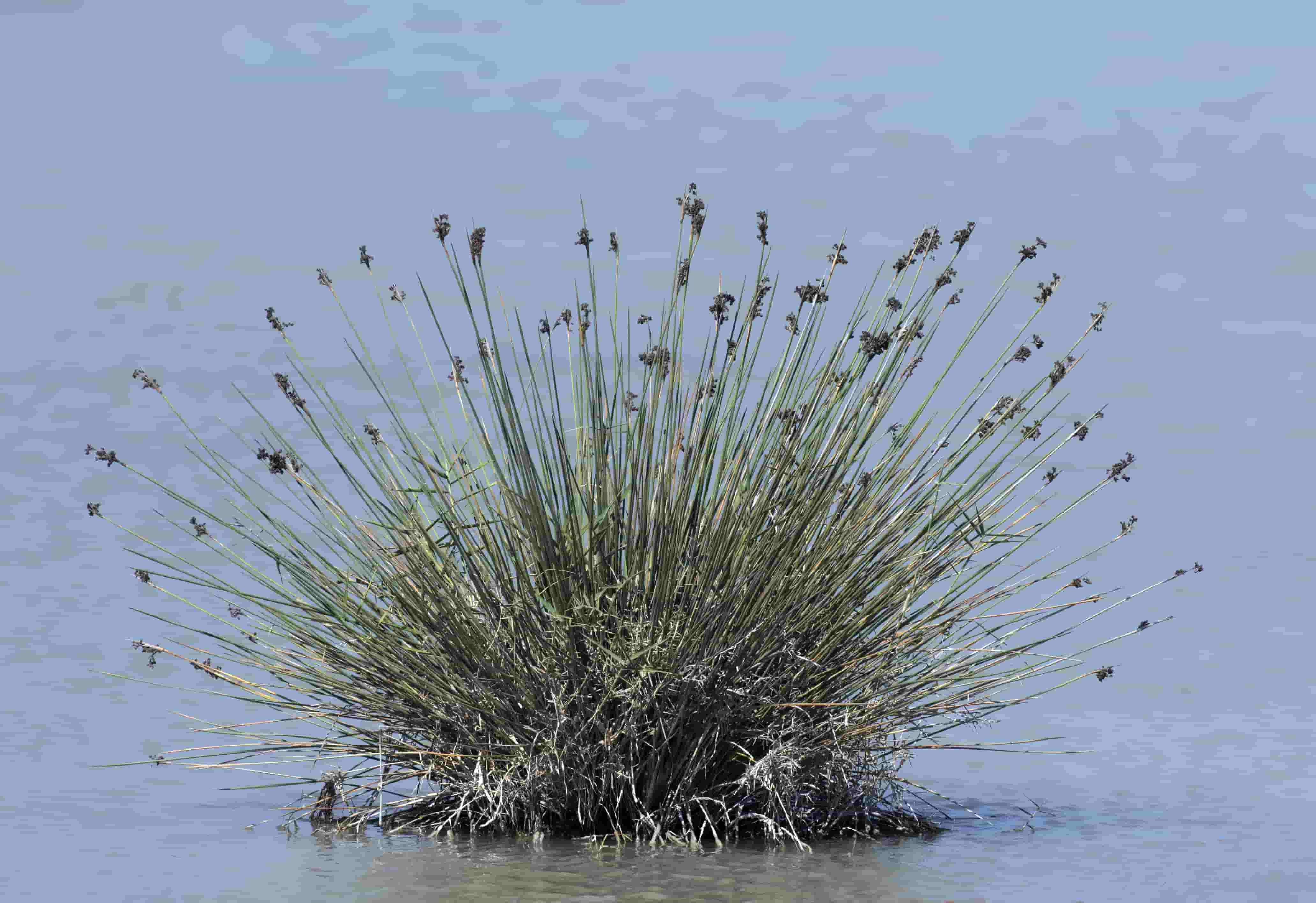
Prof Dr Bilquees Gul — a Pakistani female scientist and the present director of the Institute of Sustainable Halophyte Utilisation at the University of Karachi — has her name placed among the six scientists who recently produced a three-volume study ‘Handbook of Halophytes: From Molecules to Ecosystems towards Biosaline Agriculture’, which provides a unique resource of knowledge on halophytes that can play a major role to deal with the food crisis and salinity threat to agriculture.
The three-volume book has been published under the editorship of Marius-Nicusor Grigore, a professor of the Alexandru Ioan Cuza University, which is one of the oldest higher education institutions in Romania.
These international scientists and authors have gathered all relevant knowledge about halophytes, which are a group of plants that can survive and grow in highly salty soil or waters in coastal areas, inlands, deserts, semi-deserts, and marshes.
“This research work provides a rich overview of the most important theoretical and empirical work in the field,” said Dr Bilquees as he spoke with The News about the handbook.
For the past 23 years, she has been associated with research and teaching. She worked on a number projects to utilise saline lands in the coastal areas and inlands of Sindh for agriculture. Her research worked deals with non-conventional crops for saline land and water.
Dr Bilquees believes that through halophytes, saline land can be utilised for the well-being of human beings by securing agriculture and environment.
Also Read: NUST & COMSATS researchers have successfully improved the quality of retinal images
She told The News that very few halophyte research institutes were functioning in Asia. However, Pakistan was one of those countries where the Institute of Sustainable Halophyte Utilisation at KU had been carrying out research in the field of halophytes since 2007. It also offers MPhil- and PhD-level degree programmes.
Scientists of China, Romania, Turkey, Spain, the United States, Germany and Australia have been carrying out research on halophytes. At present, Pakistani and Chinese scientists have jointly launched several research projects regarding halophytes in Pakistan. Many of such projects have been completed while a few of them are currently under way.
Also Read: Pakistan’s youngest author, Maryam Arif, has also published a research article on oncology
About halophytes

According to Dr Bilquees, she and her team have enlisted around 450 local halophytes species which can grow in saline soils, including coastal areas and inland of Pakistan. “Apart from growing mangroves, we need to focus on halophytes utilisation and its commercialisation to deal with deleterious effects of high soil salinity and to endure uncongenial salt marsh environments,” she said.
Her late husband Dr Muhammad Ajmal Khan, who was serving as the vice chancellor of the KU at the time of his death in 2019, was also a renowned halophyte biologist who extensively explored the demography of halophytes, ecological management of inter-tidal, coastal and inland saline ecosystems, and salinity effects on the growth of salt-tolerant halophytes.
The handbook
The latest handbook that Dr Bilquees and six other international scientists have produced highlights the potential of the biosaline agriculture in a changing environment. It covers important topics related to halophyte biology including biochemistry, genetics and genomics.
Also Read: Why Pakistan’s research sector needs urgent attention?
“The three-volume study provides information on potential use of halophytes. Each topic is explained in detail and examined from various angles,” Dr Bilquees said and added: “the study includes more than 100 contributions authored by competent researchers covering almost all important topics related to halophyte biology and its classification. It’s a comprehensive view on the fascinating group of plants—the halophytes.”
She said that the idea of compiling this handbook was born in 2019 from the need for having a treatise that had all the relevant knowledge about the halophytes. Owing to the lesser known field, a team of European scientists took on board Dr Bilquees and Turkish scientist Munir Ozturk to complete this study.
“It was a strenuous task to compile such an in-depth study. However, we worked as a team. Now research students and faculty members can benefit from this book. They can make references in their research during exploration and finding solutions to deal with global climate change, land degradation, water scarcity, and food security for the future.”
Also Read: US and Pakistani researchers used AI to detect online abuse with 97% efficacy
Upcoming Book Series
A book series titled ‘Blue Carbon Ecosystems for Sustainable Development’ under the editorship of Dr Bilquees is currently under publication. The editorial team consists of many international scientists, including Dr Benno Böer, Dr Miguel Clüsener-Godt and Dr Ronald Loughland. This new scientific book series derives from the Springer Tasks for Vegetation Science book series, especially from those volumes dealing with the sabkha ecosystems.
“In order to achieve the 17 United Nations sustainability goals, scientific research into blue carbon ecosystems is an absolutely important element. Moreover, monitoring is needed, as well as the conservation of the remaining blue carbon ecosystems, and the restoration of lost habitat,” she said.
According to Dr Bilquees, the editors of the book series are committed to generating new scientific knowledge on blue carbon ecosystems and their components, with a special focus on halophytes and salinity.
Also Read: UET Lahore teams win two research grants from Pakistan Science Foundation
The book series will provide comprehensive scientific documentation inspiring the way forward on how to utilise the saline resources in the best interest of humanity. The next needed steps, according to her, are fostering academic research and networking, and involving land-users, politicians, development banks, innovative farmers, investors, energy-producers, and carbon offsetters.
Chances of success
Since its inception, the KU Institute of Sustainable Halophyte Utilisation has successfully completed around more than 10 projects on halophytes in various areas of Sindh and Balochistan. Likewise, as many as three projects are under way and two projects will be launched in Tharparkar.
“We have already successfully completed biosaline fodder plantation project in Thar in 2016-2019 and made significant progress in research on this subject,” said Dr Bilquees. She added that she believed that if these projects were properly implemented, they would contribute significantly towards rehabilitating saline land and also provide fodder and food to arid areas like Thar.
“I believe this biosaline agriculture project would play a vital role in taking care of local communities of Tharparkar and adjoining areas. Utilising brackish water in Thar will reduce pressure on fertile lands and fresh water resources,” she stated and explained that in such projects, brackish water would be obtained from underground by pumping it out from a level of 180 metres in open-pit coal mines.
Also Read: Aga Khan University wins grant to develop gene therapies for blood disorders
Scope of halophytes
According to Dr Bilquees, the waterlogged and saline land of the country, especially that in lower Sindh and Balochistan, could be used and eventually reclaimed by planting halophytes. “In Pakistan, land salination is one of the major reasons of desertification and degradation process [of soil]. At present, about 6.3 million hectares are affected. Apart from a few localised areas, salt-affected soils are confined to the Indus plain,” she explained.
She pointed out that salinity in Sindh, as elsewhere in Pakistan, was high primarily because of two reasons. The first was our faulty irrigation mechanism as the canals that criss-crossed the landscape of Pakistan allowed water to evaporate and seep through. Both the evaporation and seepage led to salinity, she said.
The second reason behind salinity, she said, was the fact that base rocks in the country had a high composition of sodium chloride. She said that shortage of freshwater had also disturbed hydrological balance at the coastline where sea intrusion was taking place fast and playing havoc with the highly productive land of lower Sindh.
Also Read: ‘National Centre for Robotics and Automation’ will soon lead technological development in Pakistan
“Certainly the [saline] land is not usable by regular crops. Yet certain plants have adapted to saline land. In fact some halophytic plants cannot grow without some salt in the soil. There is great potential for using saline land through research and testing of high salinity plants on saline soils,” she remarked.
Regarding the types of crops that could be grown on saline soil, she said, “the production of grass and seeds for cooking oil are examples of economic use of high saline plants grown on saline soils. The value of stabilising the soil is another positive effect. This approach can have a huge impact in the world because it is estimated that one-third of the irrigated soil is becoming saline.”
“Halophytes can be grown as forage for cattle in saline conditions. They can be employed to reduce salinity of land. Apart from landscape gardening, they can be used as sand-binding plants, particularly in the wastelands of Balochistan. They can also be employed to generate oil seeds.”
Courtesy: The News
![]()





